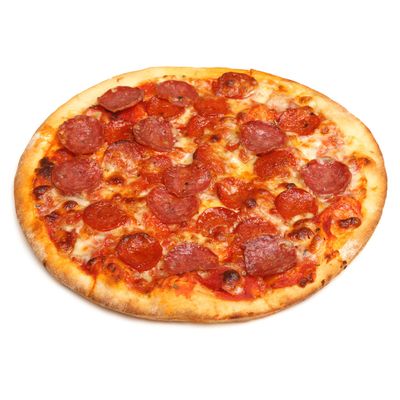
“Eat more pizza to save more money” might sound like the economic advice of a broke college student, but it’s actually mathematically sound advice. According to an extensive review of 74,476 pie prices from 3,678 pizzerias around the country plotted out by NPR, even a two-inch difference in pizza size matters quite a bit. While the price difference between small, medium, and large pies is typically a matter of a few dollars, the total surface area of those pizzas almost always increases significantly with the larger sizes.
Case in point: A 12-inch pizza is really twice as much pizza (2.3 times, to be exact) as its eight-inch counterpart, not simply four inches more. An even better deal would be — if you’re hungry — to spring for the 16-inch pizza, which at first purports to be twice as large as an eight-inch pie, but is in reality actually four times as large, and only a few dollars more. To see this pizza-area magic as a function of price, NPR’s Planet Money has set up a graph with a sliding bar here that allows you to play around with the data.
Just remember, this bit of life-hack-esque math applies only to circular pies — sorry, Sicilian lovers — the area of which, if you recall from sixth-grade math*, increases with the square of the radius multiplied by pi, the mathematical constant. Now all we need is for someone to prove, hopefully, that this price-per-surface-area rule carries over to the cost of toppings.
74,476 Reasons You Should Always Get The Bigger Pizza [Planet Money/NPR]
*Circumference: C=πd or cherry-pie-delicious as mnemonic; Area: A=πr2 or apple-pies-are-too.




